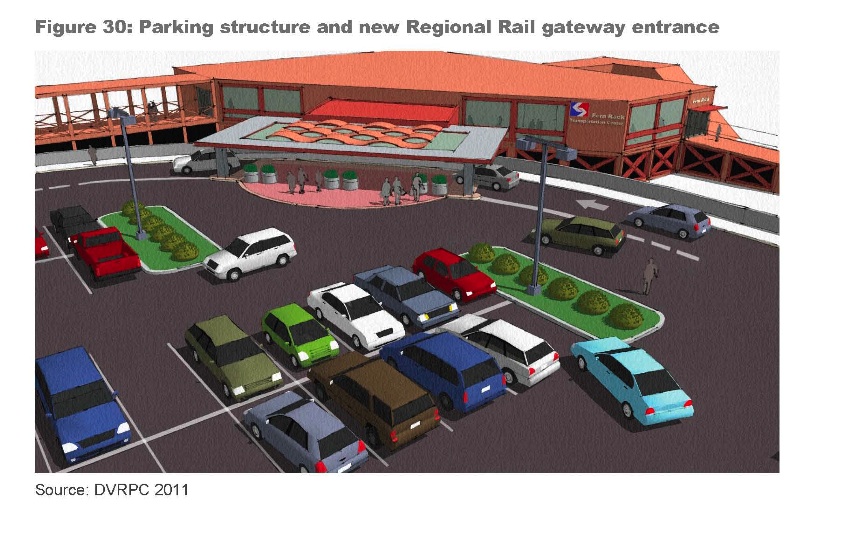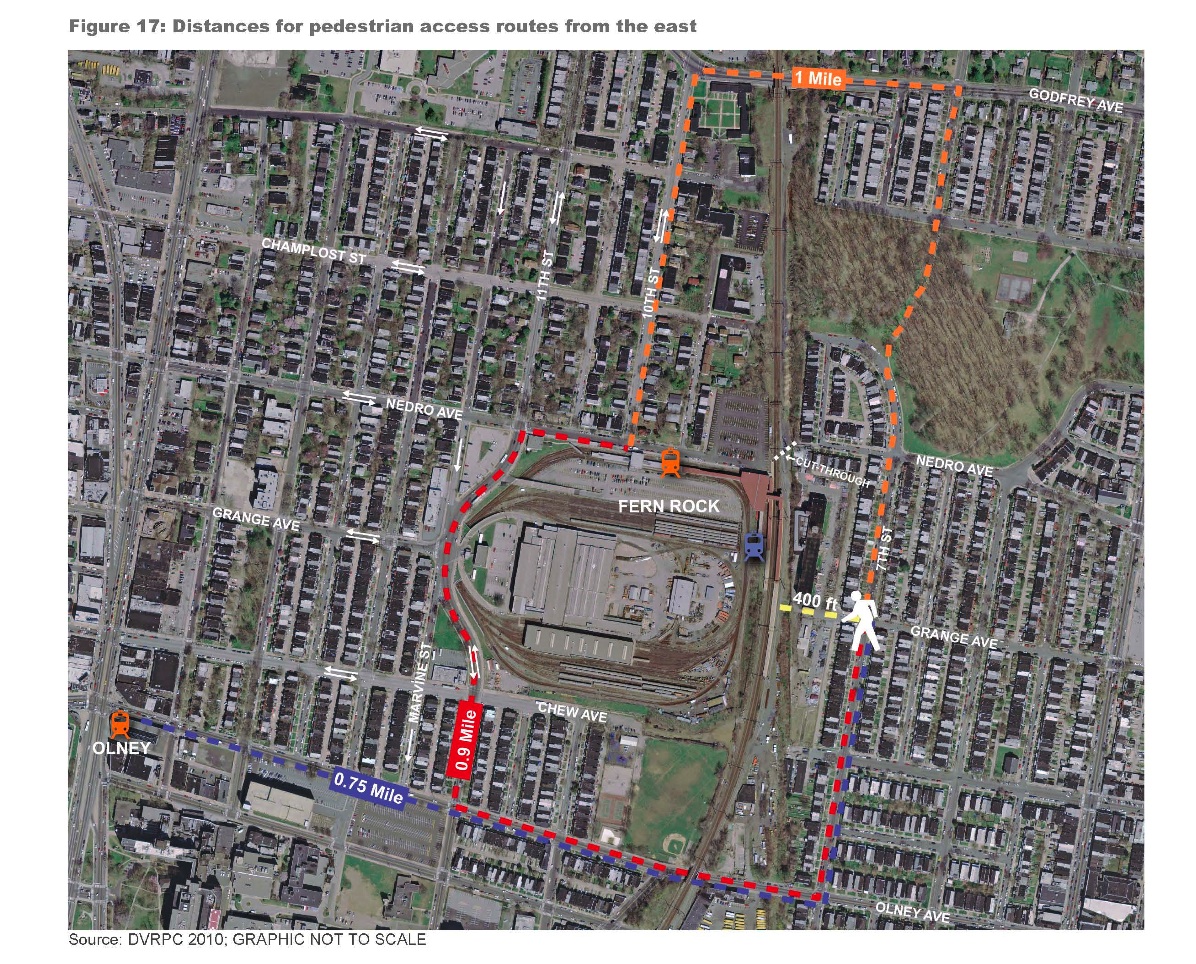DVRPC releases plan to make Fern Rock work better
Fern Rock Transportation Center is too big for its own good.
The North Philadelphia facility ― a key transfer point between SEPTA buses, regional rail and the Broad Street Line ― was rebuilt in the early 1990s to handle a massive influx of rail passengers from the suburbs.
Regional rail into the city had been closed for extensive improvements, and every day thousands of passengers transferred to the subway.
But now, SEPTA is stuck with “a relic” with “a lot of dead space,” according to Byron Comati, the authority’s director of strategic planning and analysis.
That would change under a plan released last month by the Delaware Valley Regional Planning Commission.
SEPTA would reconfigure the station to make better use of the space and better connect it to the surrounding neighborhood ― especially to the east, where residents need to walk almost a mile out of their way to circumnavigate SEPTA’s regional rail tracks.
And given the placement of subway yards and parking lots, the site is pretty much “walled in” from its surroundings, said Greg Krykewycz, a senior transportation planner at DVRPC and the report’s author.
“It feels very much like a fortress,” he added.
The centerpiece of the plan, which does not involve reconstruction of the station, is the consolidation of two SEPTA and one Philadelphia Parking Authority parking lots into a new structured parking deck that could overhang the maintenance yards ― providing cover during severe weather.
The parking situation, in part, spurred on the study. A ramp leading into one of the main station parking lots will require replacement soon.
But that portion of the project ― projected to cost more than $27 million ― is too expensive to be immediately implemented, officials concede, especially given cuts in state transportation funding.
Additionally, Comati said that a covered pedestrian ramp over SEPTA’s rail tracks to the east ― designed to solve access problems from that area ― would also be too expensive to immediately build.
Including elevators, the structure would cost slightly more than $3 million, and Comati guessed construction on that would not begin for at least three years.
With that in mind, DVRPC has come up with a series of break-out items, costing about $5 million, that SEPTA can advance incrementally, Krykewycz said.
“It’s a roadmap for strategic and coordinated investment over time,” he explained.
An easier lift will be DVRPC recommendations to separate out bus and automobile traffic around the station to ease traffic flows.
Currently, in part due to where parking lots are placed around the station, many cars drop off passengers near bus loading zones, causing congestion.
In the long term, DVRPC recommends building a new regional rail entrance with improved parking and drop-off areas.
In the short term, DVRPC says SEPTA and the city can build a block-long extension of Ninth Street, that already exists on city plans, to create a bus-only right of way.
In response to safety concerns, DVRPC recommends moving a nearby SEPTA police substation, which is located 150 feet north of the subway terminal, inside.
The move would be designed to put more “eyes on the station,” Krykewycz said.
And Comati said that such a move would better utilize the considerable amount of empty space in the station.
In the long term, the report points out that the consolidation of parking into a single structure might present a unique opportunity for SEPTA to engage in commercial redevelopment projects.
Despite being a crucial transfer point in the SEPTA system, and the northern terminal of the subway, the area around the station is completely residential.
Unlike transit agencies in cities like Boston and Washington, D.C., SEPTA has generally avoided engaging in commercial development of areas around stations ― in part because it doesn’t own much excess land.
Yet the consolidation of parking would leave the second lot as a candidate for just such a development opportunity, Krekewycz said.
Comati was cautious about such an approach, noting that nearby residents would need to approve of any plans.
Still, he said SEPTA was so pleased with the report that it has asked DVRPC to conduct a similar analysis at the Norristown Transportation Center, where SEPTA is looking to improve pedestrian, bicycle and bus access, as well as aging regional rail platforms.
Contact the reporter at acampisi@planphilly.com
WHYY is your source for fact-based, in-depth journalism and information. As a nonprofit organization, we rely on financial support from readers like you. Please give today.






